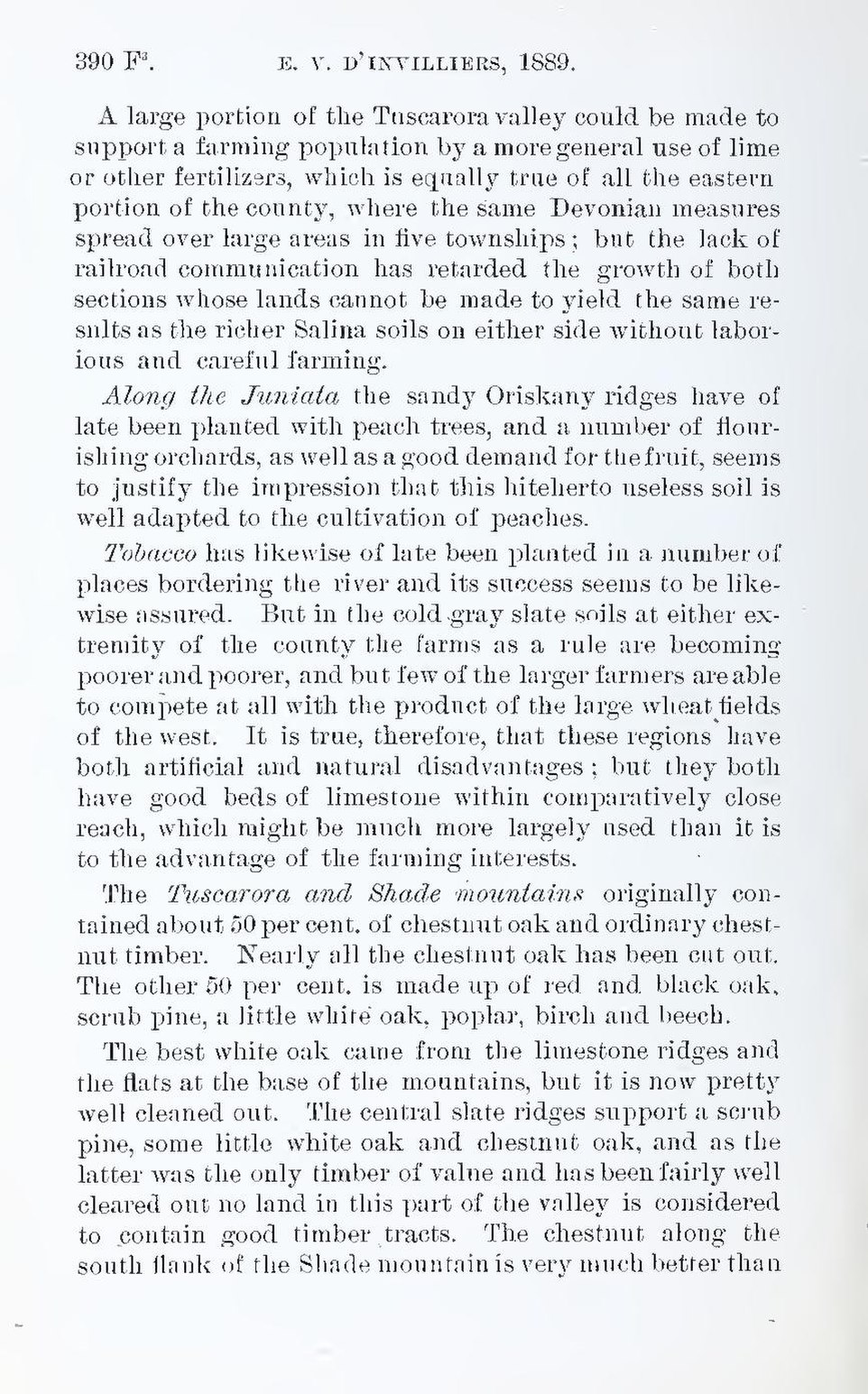A large portion of the Tuscarora valley could be made to support a farming population by a more general use of lime or other fertilizers, which is equally true of all the eastern portion of the county, where the same Devonian measures spread over large areas in five townships; but the lack of railroad communication has retarded the growth of both sections whose lands cannot be made to yield the same results as the richer Salina soils on either side without laborious and careful farming.
Along the Juniata the sandy Oriskany ridges have of late been planted with peach trees, and a number of flourishing orchards, as well as a good demand for the fruit, seems to justify the impression that this hiteherto useless soil is well adapted to the cultivation of peaches.
Tobacco has likewise of late been planted in a number of places bordering the river and its success seems to be likewise assured. But in the cold gray slate soils at either extremity of the county the farms as a rule are becoming poorer and poorer, and but few of the larger farmers are able to compete at all with the product of the large wheat fields of the west. It is true, therefore, that these regions have both artificial and natural disadvantages; but they both have good beds of limestone within comparatively close reach, which might be much more largely used than it is to the advantage of the farming interests.
The Tuscarora and Shade mountains originally contained about 50 per cent. of chestnut oak and ordinary chestnut timber. Nearly all the chestnut oak has been cut out. The other 50 per cent. is made up of red and black oak, scrub pine, a little white oak, poplar, birch and beech.
The best white oak came from the limestone ridges and the flats at the base of the mountains, but it is now pretty well cleaned out. The central slate ridges support a scrub pine, some little white oak and chestnut oak, and as the latter was the only timber of value and has been fairly well cleared out no land in this part of the valley is considered to contain good timber tracts. The chestnut along the south flank of the Shade mountain is very much better than
